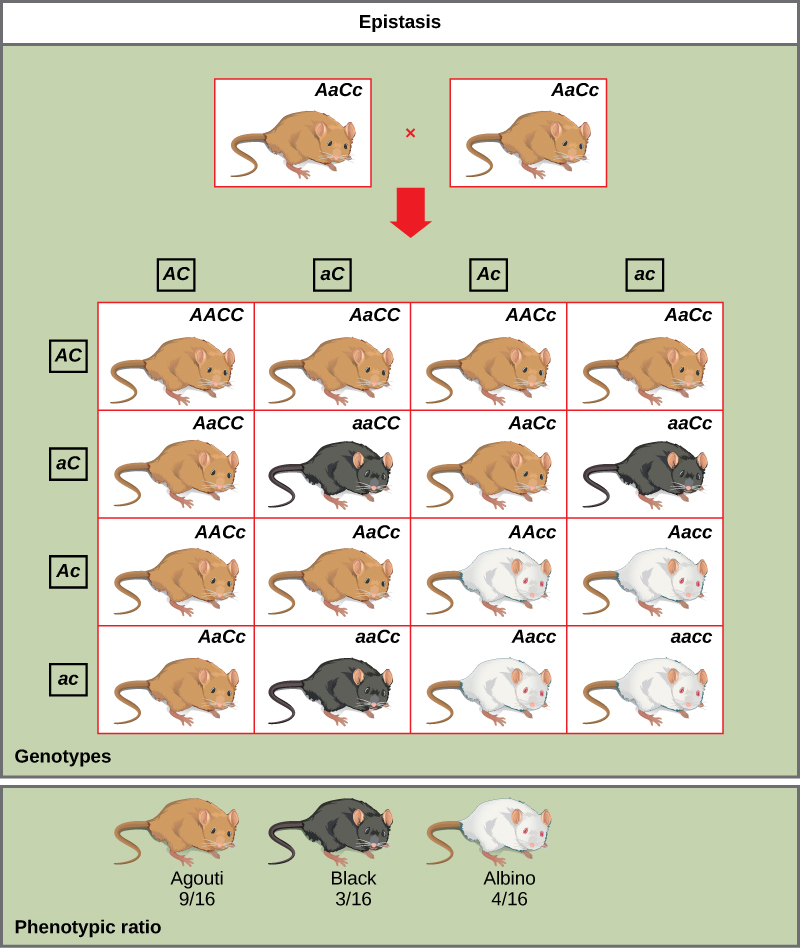| << Chapter < Page | Chapter >> Page > |
Mendel’s studies in pea plants implied that the sum of an individual’s phenotype was controlled by genes (or as he called them, unit factors), such that every characteristic was distinctly and completely controlled by a single gene. In fact, single observable characteristics are almost always under the influence of multiple genes (each with two or more alleles) acting in unison. For example, at least eight genes contribute to eye color in humans.
Eye color in humans is determined by multiple genes. Use the Eye Color Calculator to predict the eye color of children from parental eye color.
In some cases, several genes can contribute to aspects of a common phenotype without their gene products ever directly interacting. In the case of organ development, for instance, genes may be expressed sequentially, with each gene adding to the complexity and specificity of the organ. Genes may function in complementary or synergistic fashions, such that two or more genes need to be expressed simultaneously to affect a phenotype. Genes may also oppose each other, with one gene modifying the expression of another.
In epistasis , the interaction between genes is antagonistic, such that one gene masks or interferes with the expression of another. “Epistasis” is a word composed of Greek roots that mean “standing upon.” The alleles that are being masked or silenced are said to be hypostatic to the epistatic alleles that are doing the masking. Often the biochemical basis of epistasis is a gene pathway in which the expression of one gene is dependent on the function of a gene that precedes or follows it in the pathway.
An example of epistasis is pigmentation in mice. The wild-type coat color, agouti ( AA ), is dominant to solid-colored fur ( aa ). However, a separate gene ( C ) is necessary for pigment production. A mouse with a recessive c allele at this locus is unable to produce pigment and is albino regardless of the allele present at locus A ( [link] ). Therefore, the genotypes AAcc , Aacc , and aacc all produce the same albino phenotype. A cross between heterozygotes for both genes ( AaCc x AaCc ) would generate offspring with a phenotypic ratio of 9 agouti:3 solid color:4 albino ( [link] ). In this case, the C gene is epistatic to the A gene.

Epistasis can also occur when a dominant allele masks expression at a separate gene. Fruit color in summer squash is expressed in this way. Homozygous recessive expression of the W gene ( ww ) coupled with homozygous dominant or heterozygous expression of the Y gene ( YY or Yy ) generates yellow fruit, and the wwyy genotype produces green fruit. However, if a dominant copy of the W gene is present in the homozygous or heterozygous form, the summer squash will produce white fruit regardless of the Y alleles. A cross between white heterozygotes for both genes ( WwYy × WwYy ) would produce offspring with a phenotypic ratio of 12 white:3 yellow:1 green.

Notification Switch
Would you like to follow the 'Biology' conversation and receive update notifications?